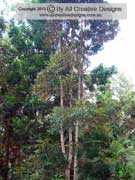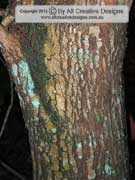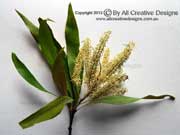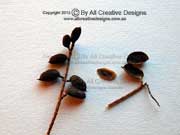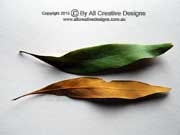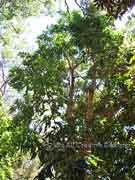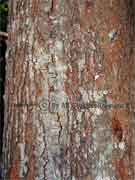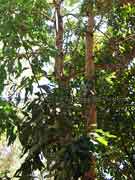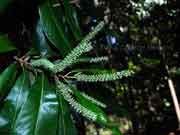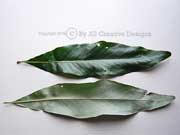
< Expand Menu to access our Tree Identification Pages
Tree Identification by Habit, Bark, Flower, Fruit & Leaf
Identification of native Grevilleas and forest tree species on Australia's East-Coast, using photos of vegetative features (with enlarged views) and comprehensible text descriptions. Grevillea species pictures show the full tree or shrub, bark, flower and/or fruit and leaf samples. Species in the following genera are listed in groups on our web pages: Australian Fig trees (Ficus spp.), Australian Eucalypts (Eucalyptus spp.), Grevilleas (Grevillea spp.) and Lilly Pillies / Satinashes (Syzygium spp.). Otherwise all native Australian tree species are listed in alphabetical order. This tree identification resource lists more than 440 native species and is constantly extended, revised and updated. View Common Name Species List or Botanical Species List to locate tree and shrub species.
JUMP TO: G Grevilleas
Foambark Tree Jagera pseudorhus
Foambark Tree Jagera pseudorhus Other names: Pink Foambark
A dense and rounded canopy is characteristic for this small to medium sized tree species, which under ideal conditions reaches a height of 30m. It is found in different types of rainforests and regrowth areas (Photo 1). Bark on the trunk is grey in colour, hard and marked by small vertical ridges and blisters (2). Small yellowish brown flowers develop into densely hairy capsules up to 2cm across, which turn from a bright pink/purple to brown with maturity (3). Pinnate or bipinnate compound leaves consist of up to 20 leaflets, which are; up to 7cm long, lanceolate (lance-shaped) or more elliptic with toothed margins, soft and finely hairy on both surfaces. The leaflet base shape is asymmetric. Smaller branches, petiole (leaf stalk) and petiolules (leaflet stalks) are all covered in fine brown hair
(4 & 5). Distribution: From mid-north coast of NSW to north Qld. (See Leaf Characteristics) for more information on definitions used.
Green Guide Trees of Australia
How to recognise Australian tree families and genera.
A practical field guide to the identification of native species. More than 200 full colour photographs and detailed descriptions explaining leaf, bark, flower, fruit and other tree characteristics. The guide was written and illustrated by the author of these web pages.
New Holland Publishers: January 2016
Format: Paperback with PVC
Pages: 128 pp.
Size: 13 cm wide x 18 cm high
First Edition, Hand Signed Copies
CLICK HERE FOR MORE INFORMATION Forest Maple Cryptocarya rigida
Forest Maple Cryptocarya rigida Other names: Rose Maple
This beautiful small understorey tree is found within and on the margins of subtropical and warm temperate rainforests or in adjacent wet tall forests (Photo 1). Bark is a light grey in colour and features softer corky warts and some fissures, but is otherwise quite firm in texture. Bark on saplings is smooth and dark grey to nearly black in colour (2). The evenly white and waxy covering on the lower leaf surface and the neatly arranged foliage are good identification characteristics, as are the finely brown hairy growth buds (3). The fruit (a drupe) is; oval shaped with a a distinct narrowed base, up to 25mm long and shiny dark blue to black in colour when fully ripe in mid to late summer. It contains a beautiful pink hard seed with longitudinal markings (4). Simple leaves with an alternate arrangement are; up to 13m long, elliptic to obovate (reverse egg-shaped) with entire margins, dark green, hairless and semi glossy on top, whitish grey, waxy and finely hairy beneath, rather firm, smooth in texture and emit a fruity smell when crushed. Leaf apex is acute ending in a fine point, base shape is varied from rounded to more cuneate. Mid and lateral veins are raised on lower leaf surface (5). Distribution: From NSW central coast to southern Qld.
Forest Oak Allocasuarina torulosa
Forest Oak Allocasuarina torulosa Other names: Mountain Forest Oak, Rose Sheoak
This native tree is found in tall forests adjacent to different rainforest types. It is often an understorey species beneath tall Eucalypts and under favourable conditions can reach a height of 30m. This species is dioecious, meaning male and female flowers are borne on different trees (Photos 1 & 2). Bark is brown in colour, rough with deep fissures and a hard texture, becoming softer after prolonged rain (3). Woody cones produced by female trees are up to 3cm long and contain numerous small brown winged seeds (4). The male flowers are borne on the very end of branchlets. Minute scale-like leaves are less than 1mm long and appear in whorls of four (sometimes 5) at internodes less than 1cm apart. (5). Distribution: NSW south coast to northern Qld.
Fuchsia Heath Epacris longiflora
Fuchsia Heath Epacris longiflora
This very eye-catching shrub flowers for most time of the year and is extremely adaptable to climatic conditions. It reaches a height of 2m and frequently inhabits headlands, coastal heath, open woodlands and tall forests. The specimen shown was observed at cliff face, bordering cool temperate rainforests at an altitude above 1400m, receiving freezing winds and snowfalls in winter (1). Bark is brown in colour, weathering to grey with a rough, fibrous texture (2). The gorgeous tube-shaped flowers are up to 4cm long and their natural colour ranges from deep pink to red or white. The corolla (flower tube) splits into 5 pointed and pure white lobes at the apex (3). Young branchlets are covered in long white matted hair (4). Simple leaves are spirally arranged around the drooping branches. They are; 7 to 15mm long, broadly ovate in shape, dark green on both surfaces, stiff and terminate in a sharp, prickly tip (5). Distribution: Central coast of NSW to southern Qld.
Furry Nightshade Solanum hapalum
Furry Nightshade Solanum hapalum
This small shrub rarely attains more than 1m in height and is found in a range of habitats, ranging from different rainforest types to drier open tall Eucalypt forests (shown). It has an upright habit and is often found growing in small groups (1). Bark on older specimens is slightly rough, sometimes scaly in texture and an olive green to more brown in colour (2). Beautiful flowers reach on average 15mm in diameter and show 5 fused petals being a rather uniform mauve to more purple in colour. Flowering occurs over spring (3). The fruit turns bright red in colour when fully mature and is globular in shape. It measures less than 1cm across with the hairy sepals of the remaining flower calyx (base) partly covering the fleshy berry (4). Simple leaves with an alternate arrangement are; up to 7cm long, ovate (egg-shaped) with entire margins, green with a grey hue on top, grey to yellowish green beneath, densely covered in hair on both surfaces and softly furry in texture. Leaf apex is acute, base shape varies from rounded to cordate and is often asymmetric. The petiole (leaf stalk) is very hairy and reaches up to 3cm in length. Hairy veins are raised and more obvious on lower leaf surface (5). Distribution: From NSW south coast to southern Qld.
Geebung (species) Persoonia rufa
Geebung (species) Persoonia rufa
The Geebungs are an interesting and diverse group (genus: Persoonia) consisting of about 100 species, all of which are endemic to Australia, i.e. exist only in Australia. They are found in all states/territories and inhabit different environments ranging from semi-arid regions to rainforests. Geebungs are shrubs or small trees, known for their edible fleshy fruits (drupes), which characteristically feature a persistent hardened flower style at the apex.
There is no common name recorded for this species and it has been elevated from a subspecies (P. corniflora ssp. C sensu) to species level (P. rufa). It is a multi-branching upright shrub reaching a height of about 2.5m that is found in heaths, woodlands and open forests at higher altitudes (1). Bark on older stems is grey, firm and finely rough due to scattered blisters and small fissures. Young branchlets are brown and covered in short, soft and whitish hair (2). The fleshy fruit (a drupe) is broadest around the middle (ellipsoid) and turns yellowish green at maturity. It is up to 15mm long, finely hairy and topped by the persisting flower style (3). Simple leaves with an alternate arrangement are; up to 7cm long, elliptical or narrow lanceolate (lance-shaped) with entire (in-rolled) margins, sparsely hairy or hairless when mature, dark green on top, yellowish green beneath, thick and firm in texture. The brown and hairy petiole (leaf stalk) thickens at the base and is 2-3mm long. Venation is more visible on upper leaf surface (4 & 5). Distribution: confined to the northern tablelands of NSW (Gibraltar Range).
Geebung (species) Persoonia stradbrokensis
Geebung (species) Persoonia stradbrokensis
There is no official common name recorded for this species, but some sources list it as Broad-leaved Geebung. Confusingly, this common name is assigned to the very similar Persoonia levis (see Page 2). The distribution range for both species only overlaps in a small area of the mid-north coast of NSW. The distribution range of Persoonia levis stretches south from the mid-north coast of NSW to Victoria, whereas P. stradbrokensis exists north from the mid-north coast of NSW to subtropical Qld.
Persoonia stradbrokensis is a tall shrub or small tree reaching a height of 6m that inhabits dry open Eucalypt dominated forests and heath lands, east of the Great Dividing Range (Image 1). Bark at the base of older trunks is brown and fissured, whereas bark of P. levis is dark grey/black, flaky and scaly (2). The bright yellow floral tubes are up to 12mm long, finely hairy and split into 4 pointed lobes at the apex when maturing. They appear along terminal branchlets (young twigs) that are densely covered in fine hair. Branchlets continue growing and produce further leaves. Flower stalks (pedicels) are up to 4mm long and also hairy (3). The fruit, a drupe, is hairless, yellowish green when mature and up to 2cm long. The translucent and edible fruit flesh becomes very sticky on exposure and surrounds a hard-shelled seed. A prominent persisting flower style is present at the top of the fruit (4). Simple leaves with an alternate arrangement are; up to 10cm long, broadly elliptic, somewhat convex, nearly the same colour green on both surfaces, hairy when young, hairless when mature, smooth and firm in texture. Leaf apex can be asymmetric and a terminal small tip is visible. Venation is indistinct. Distribution: from the mid-north coast of NSW to south eastern Qld.
To find related species go to: Species List Botanical, and look up the genus Persoonia.
Giant Stinging Tree Dendrocnide excelsa
Giant Stinging Tree Dendrocnide excelsa
This impressive tall rainforest tree has the potential to reach a height of 45m and a trunk up to 5m in diameter. It has a fast and upright growth habit and occurs in subtropical rainforests and regrowth areas (Photo1). Bark is fairly soft in consistency and coloured grey to brown, but is often covered by mosses and lichen (2). Foliage on mature trees is frequently damaged by insects, whereas leaves of sapling trees are less affected. Leaves of juvenile specimens are up to 35cm long (3 & 4). Very painful stinging hairs cover the underside and especially the veins of the leaf. Simple adult leaves with an alternate leaf arrangement are; up to 20cm long, mostly rounded in shape with entire or toothed margins. The prominent petiole can be more than 10cm long (5). Distribution: South coast of NSW to central Qld. Note: Even half decayed leaves lying on the forest floor will still have a stinging effect. See also Shiny-leaved Stinging Tree Dendrocnide photinophylla Page 9.
Glossy Laurel Cryptocarya laevigata
Glossy Laurel Cryptocarya laevigata Other names: Red-fruited Laurel
This handsome shrub or sometimes small tree reaches a height of up to 6m. It is an understorey species that inhabits subtropical and tropical (mostly) lowland rainforests. The common name refers to the glossy leaves which are often salmon-coloured and sparsely hairy when young (Image 1). Bark at the base of the normally single trunk is brown and finely rough due to small vertical wrinkles and rounded blisters (2). The tiny scented flowers are borne on small panicles up to 8cm long. Flowers reach a diameter of 4mm when fully opened and are greenish and cream-coloured. The perianth (floral tube) is about 4 to 5mm long and splits into 6 pointed lobes (tepals) in the upper half (3). Simple leaves with an alternate arrangement are: up to 10cm long, mostly elliptic with entire margins, hairless when mature, dark green and glossy on top, paler green and also glossy beneath, relatively thin but leathery, scented when crushed. The midrib and 2 lateral veins extending to the apex are prominent, otherwise venation is faint. Leaf stalk (petiole) is less than 10mm long and grooved on the upper surface (4 & 5). Distribution: Northern NSW to southern Qld and tropical eastern Qld.
Golden Guinea Tree Dillenia alata
Golden Guinea Tree Dillenia alata Other names: Red Beech
This medium sized tree attains a height of up to 20m and occurs in tropical rainforests and other forest types in proximity to the coastline (Photo 1). The distinctive reddish brown coloured bark has a soft, papery and flaky texture (2). Very attractive flowers with obovate and bright yellow petals can reach up to 9cm in diameter when fully opened (3). The fruit (a capsule) opens into multiple valves, which are a deep pinkish red colour on their insides (4). Simple leaves with an alternate arrangement are; up to 20cm long, broadly oblong in shape with entire margins, very glossy on top, thick, firm and leathery in texture. Leaf apex and base shape is rounded. The petiole (leaf stalk) is conspicuously winged (5). Distribution: Tropical Qld.
Golden Pea Daviesia arborea
Golden Pea Daviesia arborea Other names: Golden Pea Tree, Bitterleaf Pea
When not in flower this species can easily be mistaken for an Acacia species (Wattle Tree), as the foliage is very similar in appearance. It is an understorey shrub or small tree rarely reaching more than 10m in height. It prefers to grow in tall, often Eucalypt dominated forests, where it plays an important role enriching nutrient poor soils (Image 1). In identification, the soft corky and deeply furrowed (grooved) bark differentiates the Golden Pea from similar Acacia species. Bark is brown in colour (2). The small flowers, typical for the Pea & Bean Family (FABACEAE), measure up to 5mm across and are a bright yellow colour (3). The fruit is a flattened pod, which is less than 1cm long and up to 5mm wide, a dried sample is shown (4). Simple leaves (phyllodes) with an alternate arrangement are; up to 20cm long, rarely more than 1cm wide, mostly linear in shape with entire margins, hairless, dark green on top and paler beneath. Slightly irregular parallel veins are faintly visible (5). Distribution: northern NSW to Qld.
Golden Penda Xanthostemon chrysanthus
Golden Penda Xanthostemon chrysanthus Other names: Johnstone River Penda
The Golden Penda is widely used as an ornamental tree along Australia's East-Coast, but is in fact endemic to far northern Qld. In its natural habitat of low and upland tropical rainforests it can reach a height of 20m, whereas planted in an open position, it will rarely reach more than half that height (Picture 1). Bark is a reddish brown colour, firm in texture and marked by irregular vertical ridges (2). Beautiful flowers feature 5 rounded and bright yellow petals up to 8mm long. The prominent filaments (of stamens) are up to 30mm long and topped by small brown (when mature) anthers. Stamens are arranged in a circle surrounding the visible and more green coloured ovary in the centre. The style with an inconspicuous stigma exceeds the length of stamens (3). The fruit is a hard spherical capsule up to 15mm in diameter, which splits at the apex to release a large number of flattened seeds. It is seated in the remaining calyx (flower base) (4). The dense foliage concentrates towards the end of young branches. Leaves with an irregular whorl arrangement are; up to 18cm long, elliptic or slightly more lanceolate/oblanceolate (lance or reverse lance-shaped) with entire margins, dark green, glossy on top, paler green beneath, hairless and firm in texture. The stout petiole (leaf stalk) is up to 15mm long. Fine reticulate venation is visible (5). Distribution: Naturally only occurring on the Cape York Peninsula, North Qld.
Golden Tip Goodia lotifolia
Golden Tip Goodia lotifolia var. pubescence Other names: Clover Bush, Yellow Pea
This widespread shrub is able to adapt to the low light conditions found under a rainforest canopy (shown), but is more abundant in transition zones and tall open forests. Under favourable conditions it can attain a height of up o 4m. Two different variations G. lotifolia var. lotifolia, with nearly hairless leaves and stems, and G.lotifolia var. pubescence (shown), which is densely hairy, are recognised (Picture 1). Bark is firm and brownish in colour (2). Pinnately trifoliolate compound leaves are characteristic, but under shady conditions can be reduced to a single lamina (leaf blade) up to 6cm long (3 & 4). When receiving more sunlight leaflets are considerably smaller, only up to 3cm long, broadly oblong or ovate (egg-shaped) with entire margins, thin and soft in texture. Leaflet apex is rounded with a very fine tip (mucronate); base is wedge-shaped (4 & 5). Distribution: Tas, Vic, NSW and southern Qld. This species with bright yellow flowers belongs to the Pea & Bean Family: FABACEAE, Subfamily: Faboideae.
Grease Nut Tree Hernandia bivalvis
Grease Nut Tree Hernandia bivalvis
This small to medium sized native species reaches a height of up to 20m and develops a lush canopy. It originates in dryer forms of rainforests, but is an uncommon occurrence in this natural habitat (Photo 1). Bark is light to dark olive green in colour and despite burls and small fissures has a rather smooth texture (2). A very attractive flowering display takes place over late spring into early summer. Individual flowers are borne on tightly packed panicles that emerge towards the end of young branches. Flowers measure up to 3cm in diameter and feature mostly eight pure white petals and four prominent stamens topped by red anthers. Bracts (part of a flower appearing to be leaf-like) surround and protect the ovary (3). The fruit turns black when ripe and is about 4cm in diameter, the persistent and overlapping bracts change to orange/red with full maturity (4). Simple leaves with an alternate arrangement are; up to 10cm long, ovate (egg-shaped) with entire in-rolled margins, hairless, dark green, glossy on top, strong and fairly stiff in texture. Leaf apex is short acuminate ending in a blunt point, base shape is rounded. Reticulate venation is very prominent on both leaf surfaces, with small bristle-like domatia showing in lateral vein axils (5). Distribution: South eastern Qld. Note: Often planted as an ornamental tree, but now increasingly rare in its natural range.
Green Banksia Banksia robur
Green Banksia Banksia robur
The Green Banksia is a shrub under 5m tall and prefers swampy conditions in coastal areas (Photo 1). Bark is grey in colour with a firm and rather rough texture due to small fissures (Photo 2). Beautiful large flower spikes reach up to 20cm in length and are a golden yellow colour (3). Simple leaves emerge in a whorl arrangement (4 to 5 leaves) beneath the growing bud and turn alternate thereafter. They are; up to 25cm long, elliptic in shape with irregular toothed margins, mid green, hairless and fairly glossy on top, pale yellow to cream coloured and velvety beneath, very firm and stiff in texture. Lower leaf surface, mid vein and laterals are covered in short fine hair. Teeth are tipped with strong and sharp callous spines (5). Distribution: NSW south coast to northern Qld. See Flower Characteristics Page and Leaf Characteristics Page for information on terms used.
Rainforests of Australia's East Coast, HAND SIGNED BOOKS; (Out of Stock) A practical and informative field guide to the identification of native rainforest species. More than 800 colour photographs, informative graphics, maps and detailed description of more than 300 species.
This book is a valuable information source for bushwalkers, students, gardeners and anyone with an interest in Australia’s native flora.
The book was written and illustrated by the author of the tree identification web pages.
New Holland Publishers: May 2019
ISBN: 9781925546293
Format: Paperback with PVC
Pages: 304 pp.
Size: 23 cm high x 15 cm wide
Full Colour Photography
Rainforests: Identification - Evolution - Reproduction
Dedicated photography of rainforest species including; mosses, mushrooms, lichens, slime moulds, ferns, conifers, flowering trees, climbing plants, orchids and palms enable the reader to identify commonly encountered species.
CLICK HERE FOR MORE INFORMATION
Green Bolly Gum Neolitsea australiensis
Green Bolly Gum Neolitsea australiensis Other names: Grey Bolly Gum
This handsome small to medium sized tree is found as an understorey species in different types of rainforests (Image 1). Bark is a greyish white colour with a firm and slightly rough texture (2). New growth is a striking pink and very soft compared to the firm mature leaves. Petioles (leaf stalks) are up to 3cm long and more or less hairless, when compared to the closely related White Bolly Gum (Neolitsea dealbata) (3). The fruit (a drupe) is globose in shape and measures up to 12mm across. It changes from green over red to a dark purple colour with age and contains a single seed (4). Simple leaves are arranged in a whorl below the growing bud. They are; up to 15cm long, elliptic to lanceolate (lance-shaped) with entire margins. The white colour of the leaf's underside is caused by a waxy coating, which can be rubbed off (5). Distribution: From NSW central coast to central Qld.
See
Leaf -
Flower - Fruit - and Bark Identification Web Pages for explanations of botanical definitions and concepts.
Select images for Full Size View. (Opens new browser window).
Use the Key to Species, which is based on leaf characteristics, to identify native trees and shrubs found on Australia's east coast.
Green-leaved Rose Walnut Endiandra muellerii
Green-leaved Rose Walnut Endiandra muellerii subsp. muellerii Other names: Mueller's Walnut
Within fertile subtropical rainforest, the Green-leaved Rose Walnut or Mueller's Walnut can reach a height of up to 35m, but in littoral and warm temperate forms of rainforests it is often encountered as a smaller tree. It is very common as a rainforest regeneration tree and found as one of the first species to recolonise adjoining tall forests (Photo 1). Mature specimens feature a flanged and buttressed trunk. The bark is hard and rather rough in texture with small vertical ridges and scattered rounded depressions; colour is a greyish brown (2). Small pink flowers a held on drooping panicles and blossom in late spring to early summer (3). Attractive new leaf growth flushes in a deep rose colour, changing to salmon and light green with maturity. Mature simple leaves with an alternate arrangement are; up to 11cm long, elliptic to broad elliptic in shape with entire and sometimes undulating margins, hairless, dark green and semi glossy on top, slightly paler, but also shiny beneath, smooth and leathery in texture. Leaf apex is acute to short acuminate ending in a blunt point, base shape is cuneate or rounded. Petiole (leaf stalk) is up to 1cm long. Centre vein and laterals are noticeably raised on lower leaf surface and net veins are visible. Domatia are shallow pockets (often more inconspicuous than the domatium shown in the red circle). They are not present on every leaf. For identification check a number of leaves on different branches (Photos 4 & 5). Distribution: From NSW central coast to Qld.
Green Wattle Acacia irrorata
Green Wattle Acacia irrorata Other names: Blueskin
This species of Acacia is widely distributed along the coastline and under favourable conditions can reach a height of 10m. The Green Wattle is found in open forests, in rainforest transition zones, as regrowth in disturbed sites and along rural roads (Picture 1). Bark on mature specimens is shades of grey in colour with a firm and slightly rough texture featuring small vertical ridges (2). Globose (rounded) flower heads are up to 8mm in diameter. They are white when emerging and turn to a golden yellow colour with maturity. Flower racemes are up to 10cm long and can hold up to 20 separate flower heads (3). Fruiting pods are up to 12cm long and covered in very fine hair (4). The bipinnate leaf arrangement is maintained on mature specimens with dark green leaflets (pinnules) up to 20mm long. Young growth is a bright yellow colour. The red growths shown in the picture are called jugary glands and can be pale yellow to bright red. They are also a good identification feature for this species (5). Distribution: NSW coast to Qld. See Flower Characteristics Page and Leaf Characteristics Page for information on terms used.
Grey Handlewood Aphananthe philippinensis
Grey Handlewood Aphananthe philippinensis Other names: Native Elm, Axe-handle Wood
This native tree prefers moist environments such as subtropical or tropical rainforests and streams banks. When growing beneath taller rainforest trees, it may only reach 10m, but under ideal conditions it is able to attain a height of more than 25m (Photo 1). Buttress roots develop on older specimens and the trunk is often misshaped and fluted. The rough bark is grey to more brown in colour and covered in longitudinal rows of small blisters (pustules) (2). Separate female and male (shown) flowers are borne on the same tree (monoecious). Male flowers are less than 5mm long. Flowering period is over spring (3). The fruit is a fleshy drupe, changing from green over yellow to black at full maturity. It is egg-shaped (ovoid) or more olive-shaped (ellipsoid) and up to 1cm long. The remnant forked (bifid) flower style persists at the apex of the fruit maturing in late summer (4). Adult simple leaves feature an alternate arrangement and are; between 3 to 10cm long, mostly ovate (egg-shaped) with up to 6 sharp, spiny teeth along either side, hairless, rather glossy, stiff and tough in texture. Prominent mid and lateral veins are impressed on the upper and strongly raised on the lower leaf surface (5). Distribution: from the NSW mid-north-coast to northern Qld.
Grey Mangrove Avicennia marina
Grey Mangrove Avicennia marina Other names: White Mangrove
This widespread Mangrove colonises muddy banks, below the high tide and above the low tide mark (intertidal zones), within estuaries and along river banks (further inland) that are affected by tidal forces. The Grey Mangrove has the potential to reach a height of 15m in tropical areas, whereas in temperate climates it is likely to be a tall shrub. Masses of distinctive upright and stick-like aerial roots (pneumatophores) are exposed at low tide and then assist in the uptake of oxygen (1). Bark is shades of grey in colour and towards the base of older trunks becomes flaky and finely fissured (2). The irregular rounded or more elongated and somewhat flattened fruit turns yellowish green when fully mature and is covered in short fine hair. It is up to 4cm long (diameter) and consists of a thin skin enclosing a single seed, which germinates while the fruit is still attached to the tree. Two seedling leaves (cotyledons), the stem and the developing root system are visible (3 & 4). Mature simple leaves feature an opposite arrangement and vary in shape from elliptic to broadly lanceolate (lance-shaped) or sometimes oblanceolate (reverse lance-shaped). They are; up to 9cm long with entire margins, hairless, dark green, glossy on top, greenish grey or silvery grey and finely hairy beneath, thick and leathery in texture. Leaf apex is acute ending in a blunt point, base shape is cuneate (wedge-shaped). The strong petiole (leaf stalk) turns yellowish on older leaves and is up to 2cm long (5). Distribution: southern Vic., NSW to northern Qld. (Also in NT, WA and SA). 3 subspecies of Avicennia marina are recognised. Despite the superficially similar appearance of many Mangroves, species belong to a number of different flowering plant families.
Grey Myrtle Backhousia myrtifolia
Grey Myrtle Backhousia myrtifolia Other names: Ironwood, Carrol
The Grey Myrtle, also called Carrol or Ironwood, is a widespread native tree species that is found in different forest types and under favourable conditions can reach a height of up to 20m (Photo1). Bark on older specimens is; very hard, rough, fissured and depending on conditions more grey or brown in colour (2). Attractive flowers are pure white in colour and measure up to 15mm in diameter (3). The fruit still resembles the shape of a flower, as the calyx (base) of the original flower enlarges and partly encloses the ripe fruit (4). Growing buds, immature leaves and young stems are finely hairy. Adult simple leaves with an opposite arrangement are; 3 to 6cm long, broad elliptic to ovate in shape with entire and slightly incurved margins, hairless, dark green and glossy on top, paler beneath, thin but firm in texture and scented when crushed. Leaf apex is short to long acuminate ending in a fine point, base shape is mostly rounded. Mid vein is raised on both surfaces, straight and numerous lateral veins are more visible below (5). Distribution: NSW south coast to central Qld.
To locate trees by botanical name or to find related species go to: Species List Botanical, which also shows all family names.
Grey Plum Diospyros pentamera
Grey Plum Diospyros pentamera Other names: Grey Perimmon, Black Myrtle, Grey Ebony, Myrtle Ebony
The Grey Plum is a very adaptable tree species and is a regular occurrence in many types of subtropical and tropical rainforests. It has a wide distribution range and under ideal conditions can reach a height of up to 40m, but specimens up to 25m are more common. The image shows a younger tree about 10m in height (Image 1). Bark at the base of older trunks is dark grey and becomes scaly (2). The succulent fruit (a berry) is rounded (globose) or more egg-shaped (ovoid) and reaches up to 15mm in diameter. It is orange or reddish at full maturity. The persistent calyx (base of flower) is present at the top of the fruit (3). Young branches are hairless and feature a distinct zigzag pattern (4). Simple leaves with an evenly spaced alternate arrangement are; up to 9cm long, elliptical or more lance-shaped (lanceolate) with entire margins, hairless when mature, dull, dark green on top, paler green with a greyish hue, strong and somewhat leathery (5). Distribution: South-coast of NSW to north-east Qld. Note: The similar and closely related Black Plum (Diospyros australis) is listed on Page 1.
Grey Possumwood Quintinia verdonii
Grey Possumwood Quintinia verdonii Other names: Smooth Possumwood
This elegant native tree grows up to 25 m tall and is found in warm temperate and subtropical rainforests (Photo 1). The bark on the trunk of older trees is mostly uniform grey in colour with a soft, smooth and corky feel (Photo 2). The foliage, featuring large glossy leaves, is very distinctive in its subtropical rainforest habitat (3). The attractive flower spikes are up to 15cm long and appear over spring (4). The growing shoots are often a vivid red. Large simple leaves with an alternate arrangement are; up to 18cm long (often larger on saplings), mainly obovate (reverse egg-shaped), hairless with a firm and stiff texture. Petiole (leaf stalk) is grooved on the top, fleshy and often coloured red, useful identification characteristics (5). Distribution: central NSW to southern Qld.
Guilfoylia Guilfoylia monostylis
Guilfoylia Guilfoylia monostylis Other names: Scrub Ooline
The Guilfoylia is a small to medium sized tree species, reaching a height of 15m or more. It inhabits a range of different types of rainforests, where it is likely to be an understorey tree (Photo 1). Bark weathers to grey on the surface, but the longitudinal fissures show the brown colour of the fresh underlying bark (2). Handsome yellow flowers are borne on panicles and feature five prominent ovate (egg-shaped) petals (3). The zigzag shape of the branchlets is a characteristic helping to identify this tree species. Simple leaves with an alternate arrangement are; up to 14cm long, elliptic to oblong in shape with entire margins, smooth, hairless and firm leathery in texture. Leaves feature visible domatia along the mid vein on the lower surface. Leaf apex is short acuminate, base shape is cuneate (4 & 5). Distribution: From NSW mid-north coast to central Qld.
Descriptions and all images copyright ©2023 by www.allcreativedesigns.com.au world wide rights reserved.
Click Images for Full Size View
Guioa Guioa semiglauca
Guioa Guioa semiglauca Other names: Wild Quince
This tree is found in a range of different habitats, ranging from margins of subtropical rainforests and stream banks to drier environments, such as tall open forests and regrowth areas. It reaches a height of up to 20m and is likely to grow in small stands (Photo 1). Buttress roots will form on more mature specimen. Bark is different tones of grey with lighter patches; some white spots visible are due to lichen growth. It is thin, hard and mostly smooth in texture (2). Tiny white flowers with pink anthers measure only a couple of millimetres across and blossom over spring (3) Compound leaves feature 2 to 6 leaflets, which are; up to 11cm long, elliptic in shape with entire margins (obovate as new growth), dark green on top, pale whitish green beneath, firm and rather leathery in texture. Leaflet apex is varied from rounded and often notched (emarginate) to acute, base shape is cuneate (4 & 5). Distribution: NSW south coast to central Qld.
Gunn's Phyllanthus Phyllanthus Gunnii
Gunn's Phyllanthus Phyllanthus Gunnii Other names: Shrubby Spurge
The natural habitat of this shrub includes tall open forests, different types of rainforests and their margins. As an understorey species, it reaches a height of up to 3m (Photo 1). Bark on older specimens is light brown in colour, firm and rough in texture, showing fine cracks (fissures) and small ridges (2). Tiny flowers are yellowish green in colour and only measure 2 to 3mm in length. Flowering period is spring and summer (3). The drooping fruit (a capsule) is red with some greenish patches and rounded (apple-like) in shape. It measures up to 4mm in diameter and ripens over autumn (4). Simple leaves with an alternate arrangement are spaced at very regular intervals (2-ranked). They are; up to 2cm long, varied in shape from obovate or broad elliptic to nearly rounded with entire margins, dark green and dull above, paler grey green beneath, hairless, thin and soft in texture. Leaf apex is rounded, base shape is rounded or broadly wedge shaped. Leaf stalk (petiole) is only 1 to 2mm long. Lateral veins are fine, but clearly visible on lower leaf surface (5). Distribution: Vic., NSW & Qld.
Grevilleas
The genus of Australian Grevilleas is well known for its unusual and amazing flowers, leading to the creation of many cultivars used in today's gardens and landscaping. Growth habit can range from a small woody shrub to a tall tree, as is the case with the Silky Oak Grevillea robusta. Natural habitats range from heaths and dry open woodlands to rainforests. Leaf shapes and arrangements are very varied and good identification features. The prominent flower styles are retained to the fruiting stage and are characteristic for the genus. The typical fruit is a follicle, which hardens with maturity and opens to release flattened and winged seeds.
Blue Grevillea Grevillea shiressii
Blue Grevillea Grevillea shiressii
The Blue Grevillea is an endangered species and only found within a small area around the NSW central coast (Photo 1). Bark is firm with wart-like lumps and small fissures; colour is dark grey to nearly black (2). Young branchlets are a reddish brown with a smooth bark texture (3). Amazing white and bluish mauve flowers with prominent multi-coloured styles measure about 20mm in length. Up to 9 individual flowers are borne on short racemes (4). Simple leaves with an alternately arrangement are; up to 18cm in long, oblong or narrow lanceolate (lance-shaped) with wavy (undulate) margins, dark green shiny on top, pale green beneath, medium thick and firm in texture. Venation is finely reticulate; mid vein is yellowish and raised on lower leaf surface (5).
'Burra Range Grevillea' Grevillea decora
'Burra Range Grevillea' Grevillea decora
There is no common name recorded for this very decorative Grevillea species, but the name Burra Range Grevillea is being used by some sources. It is a tall shrub up to 4m tall that inhabits dry open woodlands (Image 1). Bark at the base of older trunks is brown, rough and scaly. Bark texture is smoother and more olive green on branches (2). The upright inflorescence is a raceme or sometimes panicle-like with 1 or 2 branches. It is spider-like in appearance and normally less than 20cm long. The hairy floral tube (perianth) splits to expose a prominent pink or red coloured style that is up to 6cm long and sparsely covered in long white hair (villous). Anthers without filaments are visible at the end of the splitting and re-curving lobes of the floral tube (3). The fruit, a densely hairy follicle, is about 15mm long and crowned by the persisting flower style, which is typical for the genus Grevillea and a common feature for members of the Protea family (Proteaceae) (4). Simple leaves with an alternate arrangement are; up to 17cm long, elliptical or oblong with entire margins, hairless (when mature), dull, greyish green on top, paler beneath and leathery in texture. A vein running parallel to the leaf margin (intramarginal) is conspicuous and a tiny tip (mucro) is visible at the apex (5). Distribution: Tablelands of central to northern Qld. Note: A beautiful ornamental shrub for frost-free areas. (Synonymous with G. goodii subsp. decora).
Byfield Spider Flower Grevillea venusta
Byfield Spider Flower Grevillea venusta
The Byfield Spider Flower is a large shrub or small multi-trunked tree and one of the best examples in showing the astonishing and remarkable flowers of this genus (Photo 1). The rough bark is beige brown in colour and covered in small blisters (lenticels). Fissures (cracks) reveal a reddish brown under-layer (2). Green and bright yellow flowers with long blue styles are covered in white hair and held on racemes up to 10cm long (3). The vivid coloured young fruit is covered in long fine hair and matures to a hard brownish follicle up to 15mm long (4). Simple leaves with an alternate arrangement are; more than 20cm long, narrow lanceolate (lance-shaped) with either entire or deeply lobed margins, medium thick, fairly firm, dark green and semi glossy on top, pale green underneath and mostly hairless. Venation overall is faint, but mid vein is raised on lower surface and fine lateral veins are straight and steeply angled (5). Distribution: Naturally only occurring in a small area in central Qld.
Descriptions and all images copyright ©2023 by www.allcreativedesigns.com.au world wide rights reserved.
Click Images for Full Size View
Grey Spider Flower Grevillea buxifolia
Grey Spider Flower Grevillea buxifolia
This attractive shrub is rarely more than 2m tall. The specimen shown here is located in open woodland on the Gibraltar range on the northern tablelands of NSW, at an altitude above 1000m (1). Bark is brownish weathering to grey, rough and covered in irregular ridges and blisters at the base of older stems (2). Exquisite flowers with a spider-like appearance are borne in tight clusters (umbels) and about 2cm long. Ovaries and the distinctive styles are densely covered in fine white hair (3). The fruit, a small follicle, is rather uniform green in colour and covered in fine whitish hair. A persistent flower style is present at the apex (4). Simple leaves with an alternate arrangement; up to 3cm long, vary in shape from elliptic to ovate and occasionally linear (as shown) with entire in-rolled margins, dark green on top, whitish hairy beneath, strong and rigid in texture. A terminal small tip is visible (5). Distribution: South Coast, Central coast and tablelands, rarely on northern tablelands of NSW. The subspecies G.buxifolia subsp. ecorniculata has not been reported from this location.
Johnson's Grevillea Grevillea johnsonii
Johnson's Grevillea Grevillea johnsonii Other names: (Graceful Grevillea)
This Grevillea species is indeed very graceful and recorded under the common name of Johnson's Grevillea. It is also known under the name of Graceful Grevillea, but this common name is not recorded by botanical sources. It reaches a height of up to 4m and identified by its wispy foliage. Woodlands and open forests are preferred habitats (Image 1). Bark at the base of the trunk is dark greyish brown, firm and marked by irregular broad ridges/wrinkles (2). Superb flowers are borne on a short raceme less than 10cm long that has a spider-like appearance. The conspicuous styles are orange/red coloured and sparsely hairy at the base. Styles are crowned by a specific floral structure called a pollen presenter that disperses pollen collected from the stamens situated on the inside of the floral tube (perianth) before the stigma (female) receiving pollen (male) is exposed, thus avoiding self-pollination. The greenish ovary, visible at the base of the style is densely hairy and supported by a stipe (stalk) (3 & 4). Simple leaves with an alternate arrangement are deeply dissected and feature 5 to 10 lobes, which are linear in shape and less than 2mm wide. Leaves are; up to 25cm long with in-rolled margins, hairless, dark green on top, paler green beneath and rather firm (4 & 5). Distribution: Central tablelands and south coast (?) of NSW. Note: This species is a beautiful ornamental plant and has been used to produce hybrids/cultivars that are sold by nurseries.
Red Silky Oak Grevillea banksii
Red Silky Oak Grevillea banksii Other names: Dwarf Silky Oak, Banks' Grevillea, Byfield Waratah
This Grevillea species is known for its different habits (growth forms), ranging from sprawling shrubs to upright small trees, reaching a height of up to 10m. It is found in diverse habitats that include coastal heaths, woodlands and open forests (Image 1). Bark on the lower trunk is brown in colour, weathering to grey, thick, rough and fissured (2). Beautiful flowers are borne on upright racemes, which emerge from the end of young branches and can reach a length of more than 15cm (considerably shorter for some forms). Individual flowers are pinkish red, bright red, off-white or cream coloured and supported by a woolly hairy stalk (pedicel) less than 10mm long. The prominent curved styles straighten with maturity and are normally hairless (glabrous) (3). The attractive foliage consists of simple leaves with an alternate arrangement. Leaves are; up to 25cm long, normally very deeply lobed (pinnatisect), dark greyish green on top, light grey and woolly hairy beneath, firm and somewhat rigid in texture. Lobes are up to 15cm long, mostly linear in shape with in-rolled margins and feature an apex terminating in a small tip (mucronate) (4 & 5). Distribution: from south eastern to northern Qld (Townsville). Note: This species is a popular ornamental plant and a parent of many cultivated Grevillea hybrids.
Red Spider Flower Grevillea oleoides
Red Spider Flower Grevillea oleoides Other names: Olive Grevillea
The Red Spider Flower Grevillea oleoides or Olive Grevillea is a small native shrub up to 3m in height. It has a limited distribution range and inhabits moist locations in sclerophyll forests (Photo 1). Bark is grey to light brown in colour with fine fissures and a rough texture (2). Striking dark pink or red flowers measure up to 4cm across and appear over winter and early spring (3 & 4). Simple leaves with an alternate arrangement are; up to 12cm long, linear to narrow obovate (reverse egg-shaped) with entire and incurved margins, mid-green and dull on top, grey green and finely hairy below with a firm texture. Leaf apex is acute, base shape is attenuate. Mid vein is strongly raised on lower leaf surface, otherwise venation is very faint (5). Distribution: Southern areas of Sydney, Port Jackson and Robertson.
Serrated-leaved Grevillea Grevillia longifolia
Serrated-leaved Grevillea Grevillia longifolia
This tall shrub has very distinctive foliage and reaches a height of up to 5m (Photo 1). Bark is a reddish brown in colour, with a rough fibrous and fissured texture (2). The glossy foliage with its nearly white underside is a good identification characteristic (3). Stunning deep pink to red flowers heads are born in winter to early spring and are up to 8cm long (4). Simple leaves with an alternate arrangement are; more than 20 cm long, very narrowly elliptic to oblong in shape with irregular toothed margins, deep green and glossy on top, firm to stiff in texture. Lower leaf surface is a silvery white colour and features a prominently raised mid vein (5). Distribution: Limited to the central coast of NSW.
Silky Oak Grevillea robusta
Silky Oak Grevillea robusta
The Silky Oak is a well known tall tree species reaching 30m or more in height and is often planted as a street tree or grown in plantations for its beautiful timber
(Picture 1). Bark is brown weathering to grey, hard, rough and furrowed (2). For a short period in spring, the tree nearly loses all of its leaves (deciduous), followed by vivid bright yellow/orange and red coloured flower racemes up to 18cm long. Individual flowers are supported by red-coloured hairless stalks up to 15mm long (3). The fruit, a follicle, is green at first, becoming brown and woody in consistency with age. It features the remaining hardened style at the apex and contains a number of flat winged seeds (4). Pinnate (once divided) compound leaves are up to 30cm long with more than 30 leaflets. Leaflets are; deeply lobed (pinnatisect); terminal segments (lobes) are up to 5cm long, mostly elliptic in shape and feature a pale underside covered in fine hair (5). Distribution: Mid-north coast of NSW to southern Qld.
White Oak Grevillea baileyana
White Oak Grevillea baileyana
This small to medium sized tree species originates in tropical rainforests. It is widely used as an ornamental tree along Australia's east coast due to its beautiful foliage and flower display. When competing for available light it can reach up to 30m under natural conditions, whereas planted in more open locations a height of less than 15m is normal (Photo 1). Bark on the lower trunk of older specimens is hard, scaly and fissured in texture. Bark on branches and young trees is smoother and grey in colour (2). Pleasantly scented flowers are cream or pale yellow coloured. Flower racemes appear at end of young branches from late winter to early summer, depending on location (3). The fruit (a follicle) splits at one side only and measures up to 15mm in length. It contains a number of flattened and winged seeds, which are brown in colour (4). The very attractive leaves are deeply lobed on young trees and sometimes also present on older specimens. Simple adult leaves (shown) with an alternate arrangement are; between 10 to 20cm long (juvenile up to 30cm), lanceolate (lance-shaped) with entire margins, mid to dark green, hairless on top, bronze to rusty brown and hairy beneath with a strong and firm texture. Leaf apex tapers into a fine point, base shape is attenuate. Mid vein is hairy and raised on lower leaf surface (5). Distribution: Tropical northern Qld.
White Yiel-Yiel Grevillea hilliana
White Yiel-Yiel Grevillea hilliana Other names: Yiel-Yiel, Hill's Silky Oak
This native tree species has become very uncommon in its natural habitat of subtropical rainforests. It grows to a height of 25m and develops an upright slender trunk. (Photo 1). Bark is a reddish brown with a rough and flaky texture at the base of the trunk, whereas the higher part and branches feature a smoother bark, which is more beige in colour (Photos 2 & 3). The flower racemes can be more than 20cm long and hold numerous small whitish flowers that bloom in late spring (4). Simple leaves of mature trees have an alternate arrangement. They are; up to 30cm long, mostly elliptic or lanceolate (lance-shaped) with entire margins, dark green, very glossy and hairless on top, grey whitish beneath with a covering of fine hair, strong and rather stiff in texture. Leaf apex is acute ending in a blunt point, base shape is cuneate or sometimes more attenuate. The short petiole is up to 10mm long. Reticulate venation is very apparent on lower leaf surface. (Juveniles trees have lobed leaves up to 50cm long) (5). Distribution: NSW north coast to Qld.
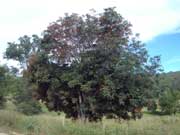
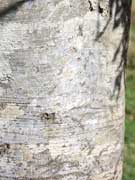
tn.jpg)
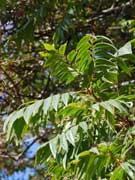
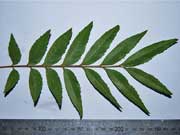
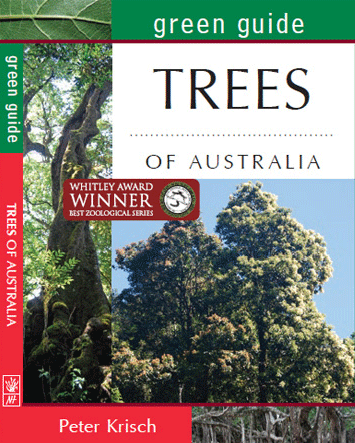
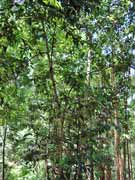
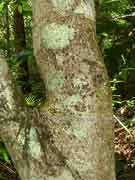
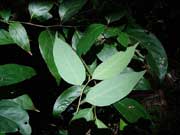
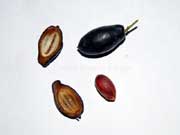
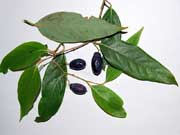
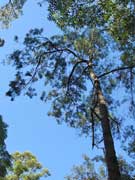
tn.jpg)
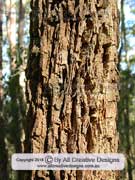
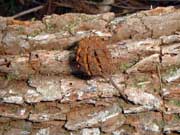
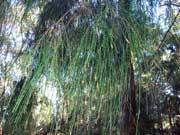
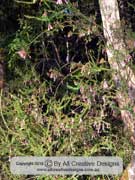
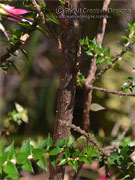
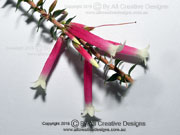
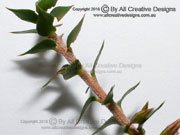
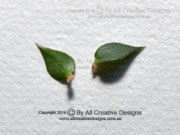
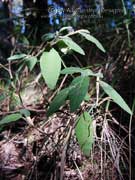
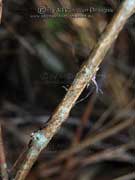
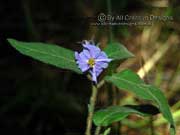
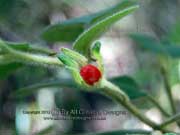
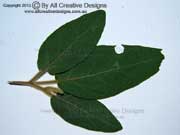
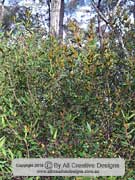
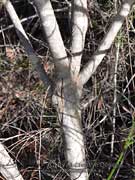
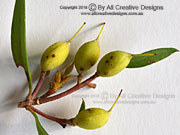

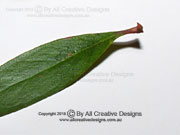
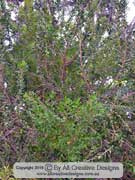
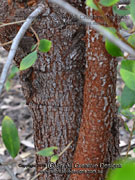
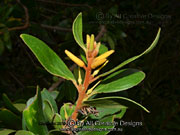
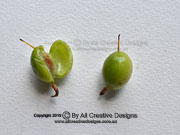
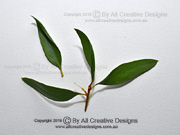
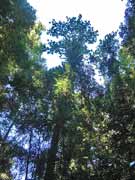
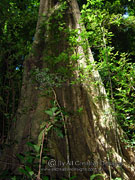
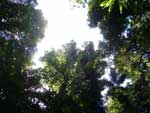
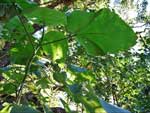
tn.jpg)
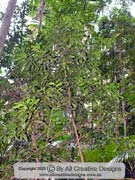
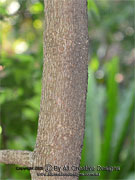
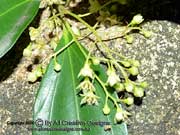
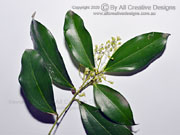
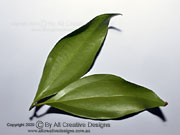
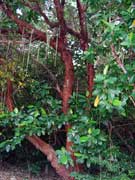
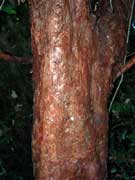
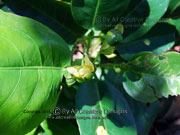
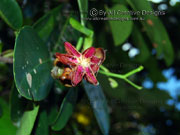
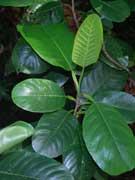
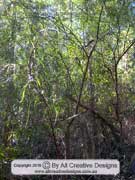
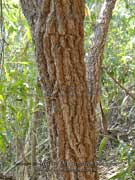
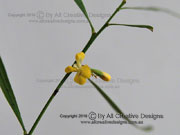
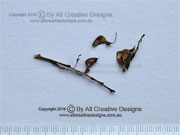
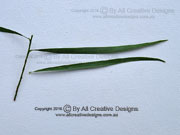
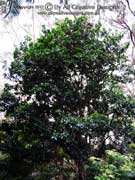
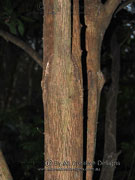
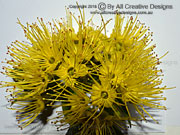
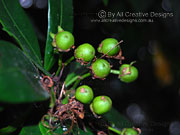
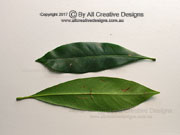
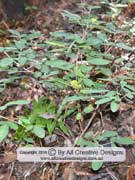
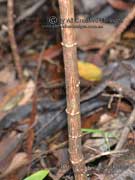
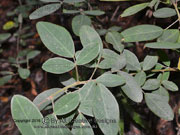
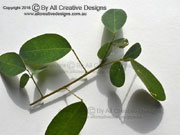
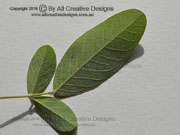
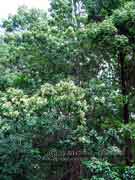
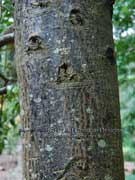
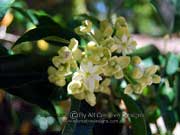
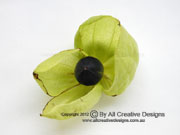
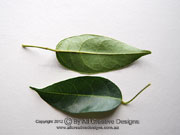
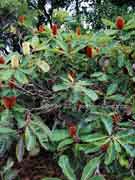
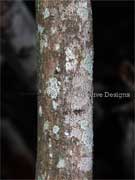
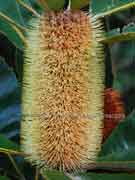
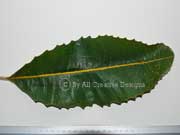
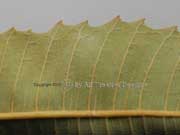
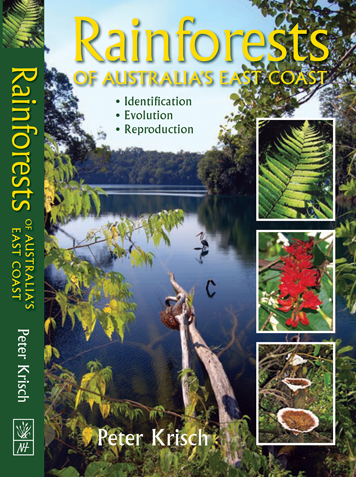
tn.jpg)
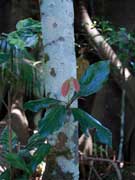
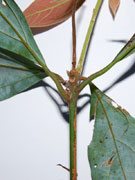
tn.jpg)
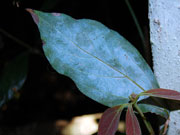
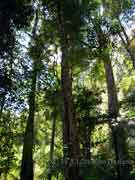
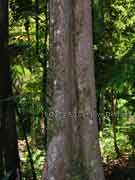
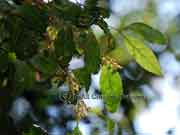
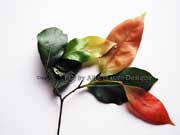
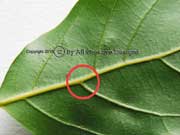
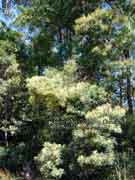
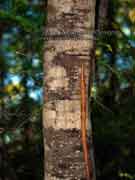
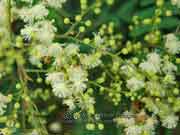
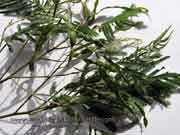
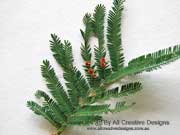
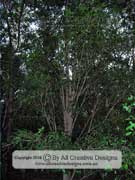
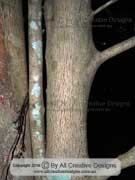
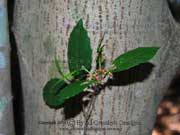
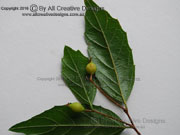
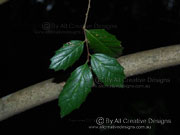
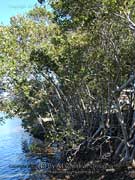
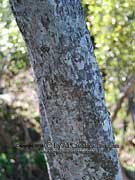
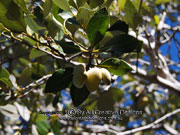
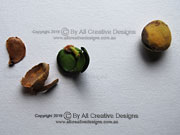
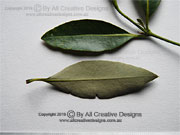
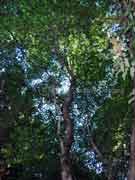
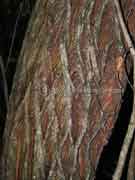
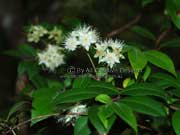
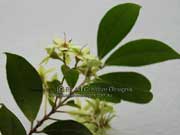
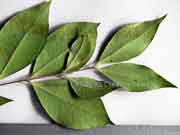
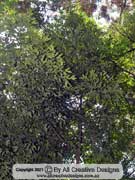
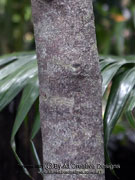
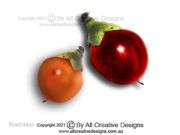
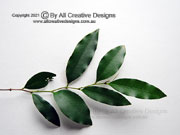
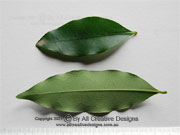
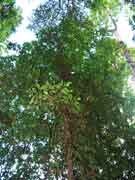
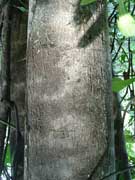
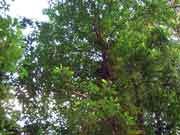
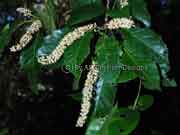
tn.jpg)
tn.jpg)
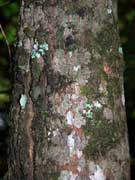
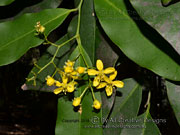
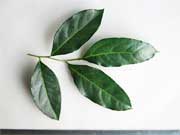
tn.jpg)
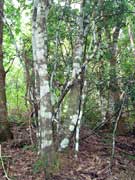
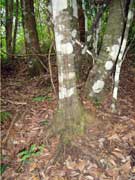
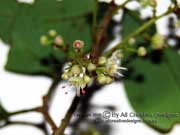
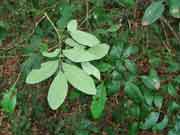
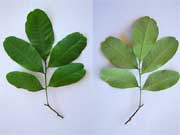
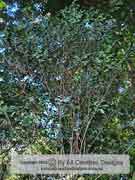
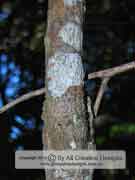
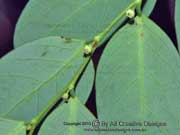
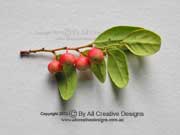
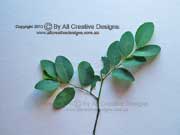
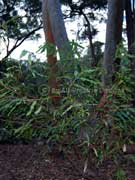
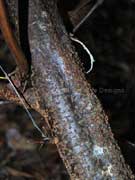
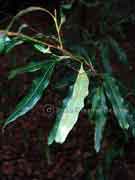
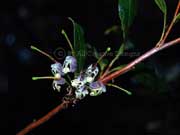
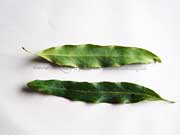
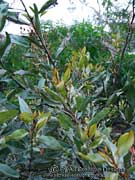
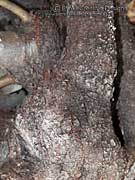
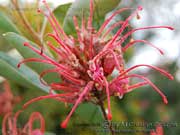
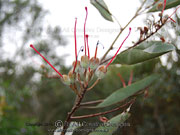
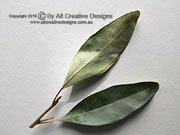
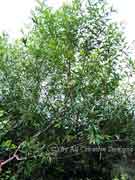
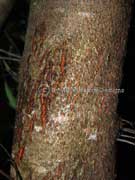
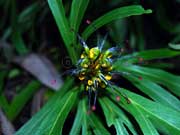
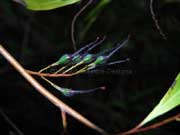
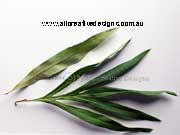
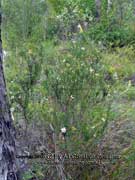
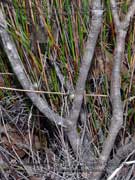
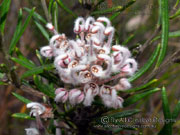
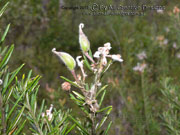
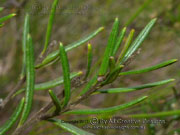
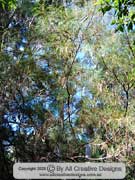
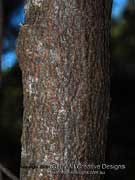
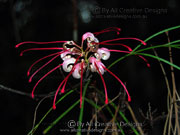
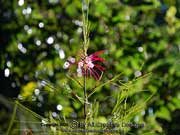
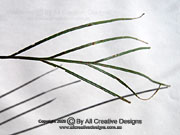
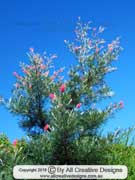
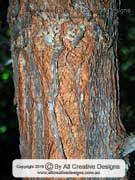
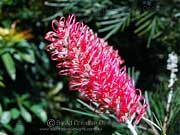
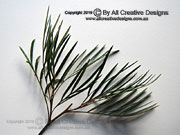
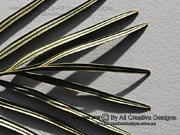
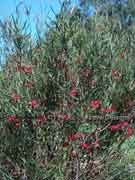
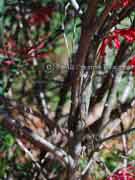
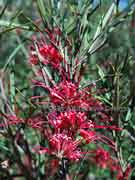
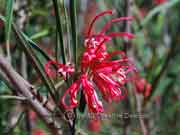
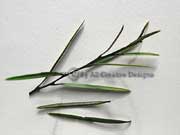
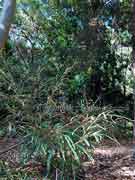
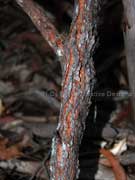
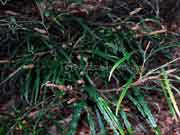
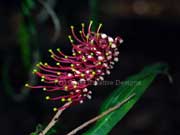
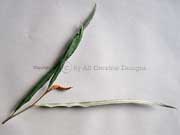
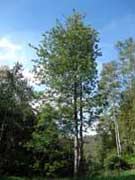
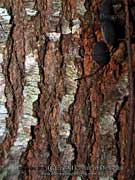
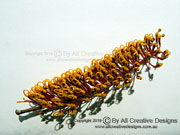
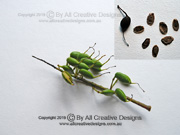
tn.jpg)
